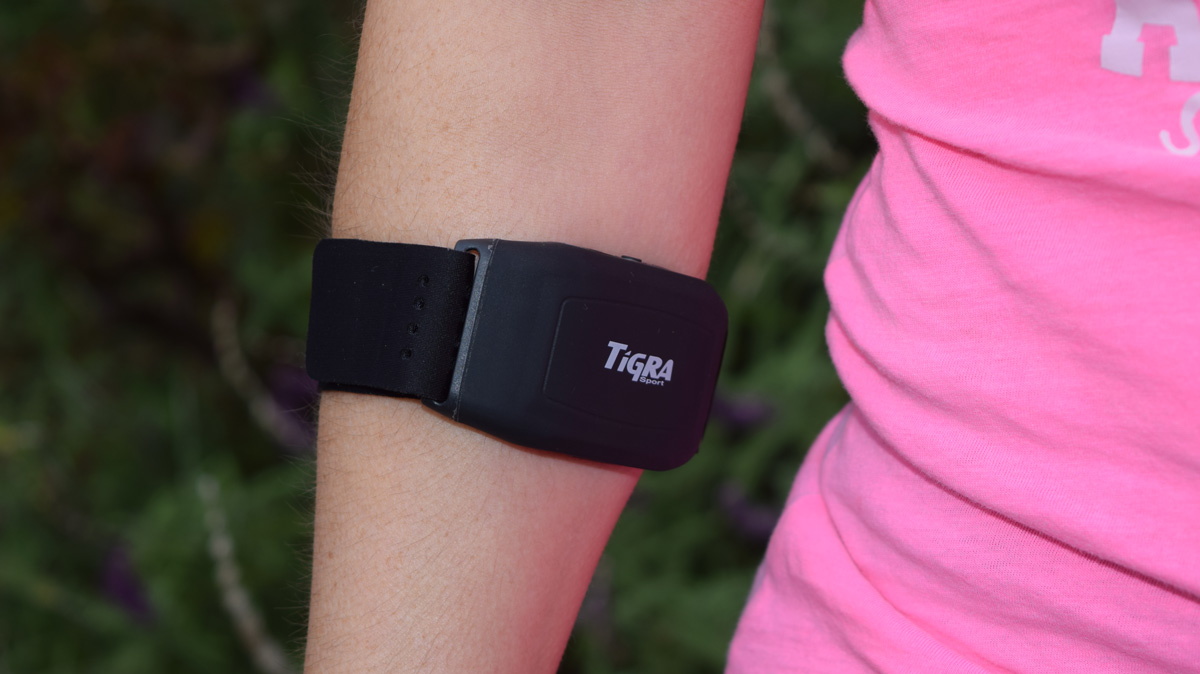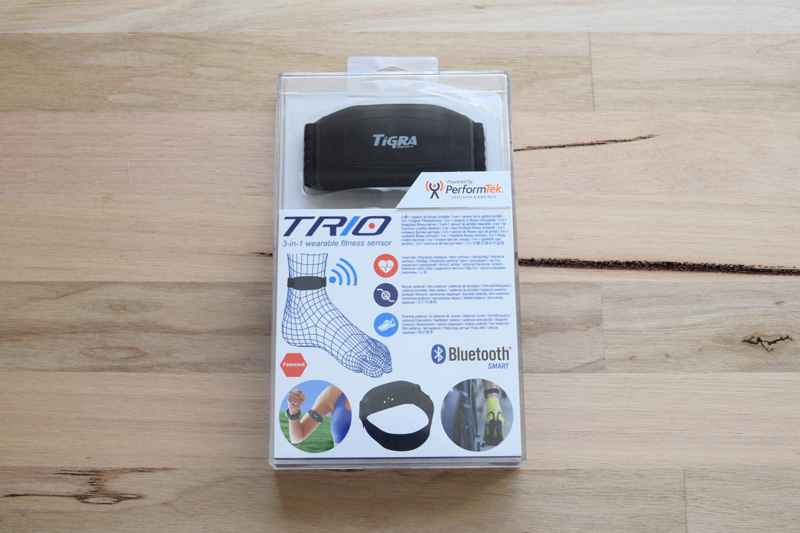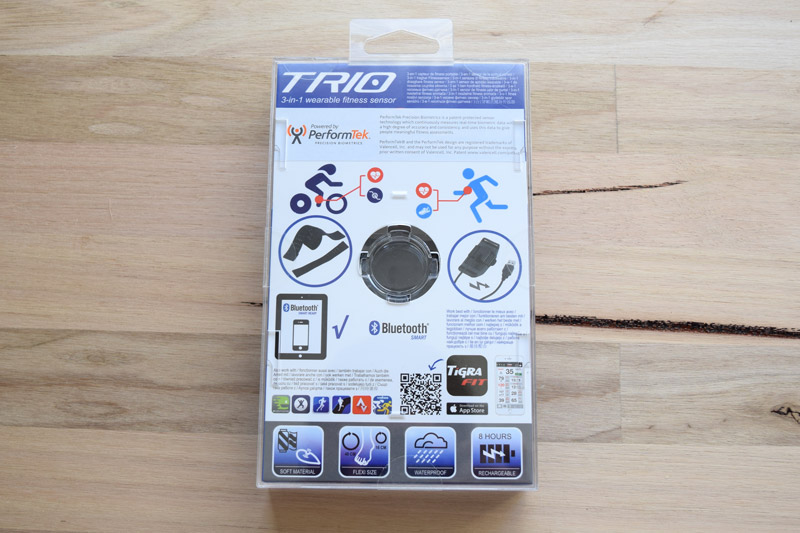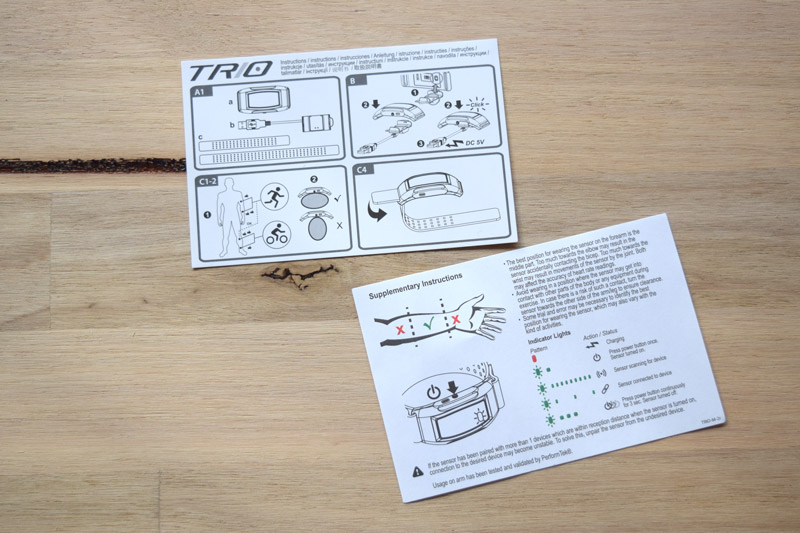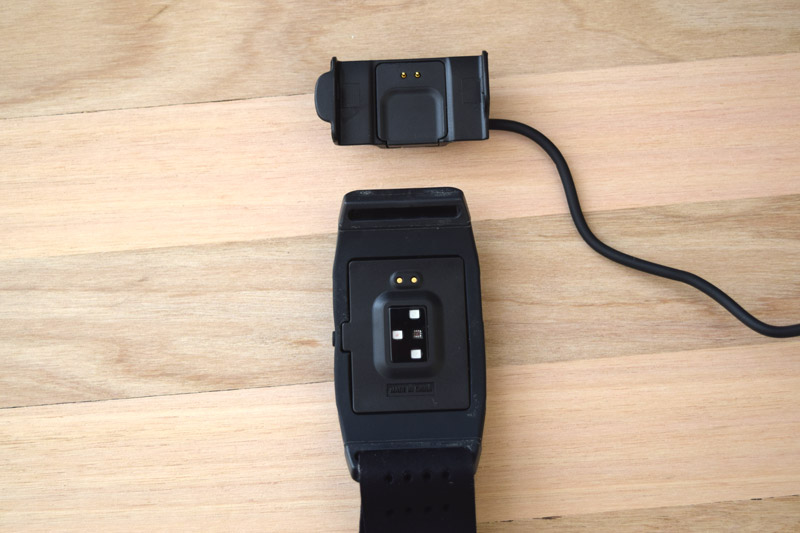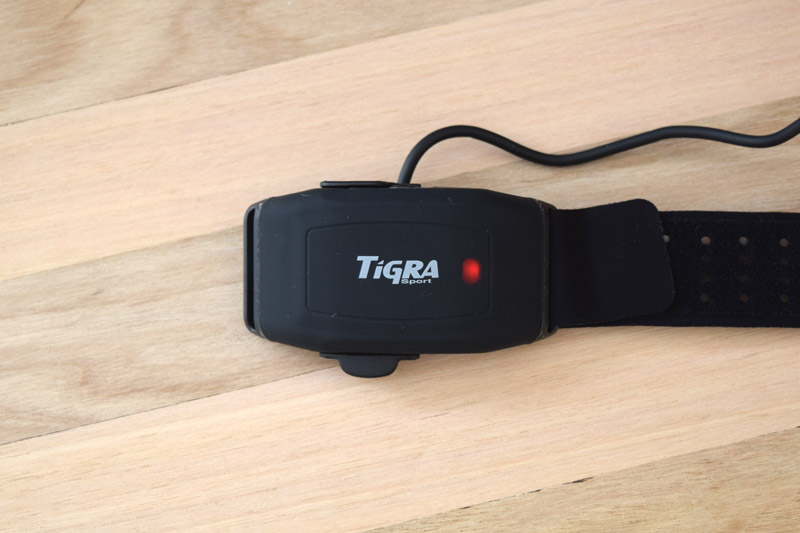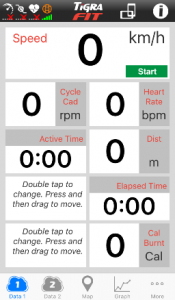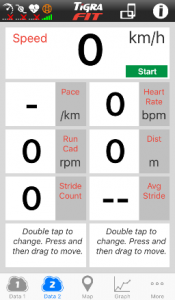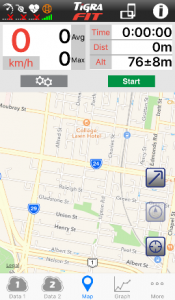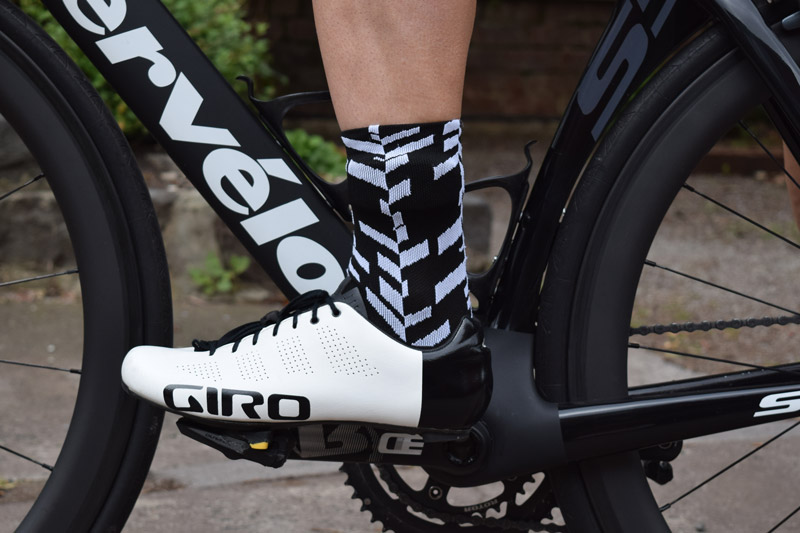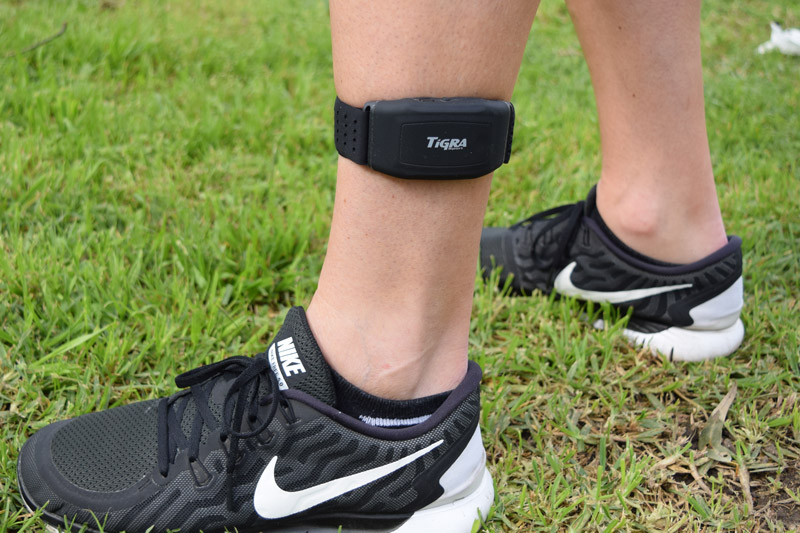Taiwan based Tigra Sport specializes in designing and manufacturing a range of accessories for smartphones to integrate and track performance of the wearer while cycling, running and other fitness activities.
There’s an extensive range of smart phone cases with Tigra Sport’s CrossLoc system enabling a phone to be worn while running, or mounted on a bike. One of Tigra Sport’s latest products caught our attention, it’s the Tigra Sport Trio 3-in-1 fitness sensor.
The Tigra Sport Trio 3-in-1 fitness sensor is an optical heart rate sensor, cadence sensor for cycling when worn above the ankle, and a stride / step counter for running and walking when worn around the arm. The Trio 3-in-One uses Valencell PerformTek precision biometrics including an optical heart rate sensor and an accelerometer to transmit your heart rate and cadence or stride via Bluetooth Smart to a smart phone app, fitness watch or cycling computer.
We’ve tested the Trio 3-in-1 sensor out while cycling and running, here’s our review.
Unboxing the Trio 3-in-1 Fitness Sensor
The Trio sensor is packaged in a hard plastic case and inside is the Trio sensor, a small and large strap, the USB cradle charger and some instructions.
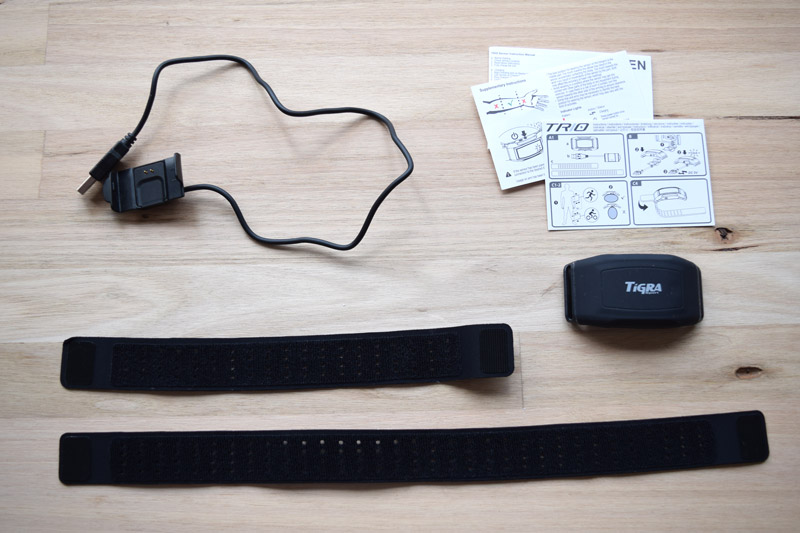
The included instructions show the locations to wear the Trio while running and cycling, and other information like the light flash pattern, charging the device and fitting the strap.
Charging is done by snapping the trio into the USB charging cradle, a red light indicates charging then the light goes out when charging is complete.
There’s also a Tigra Fit app to track your cycling and running activities, you can pair sensors for two bikes and input user fitness stats. There’s three different data pages to view while exercising.
Running with the Trio 3-in-1 Fitness Sensor
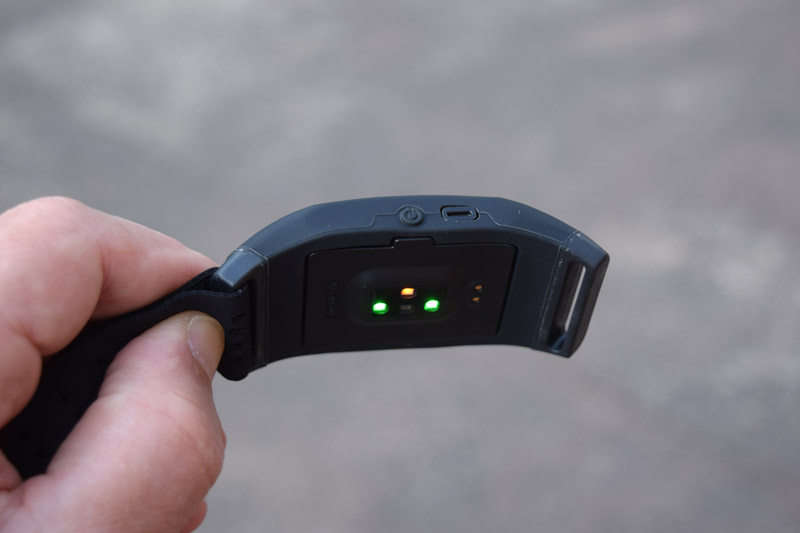
Similar to the Scosche RHYTHM+ optical heart rate band we reviewed back in March, the heart rate monitoring function of the Tigra Sport Trio is done by a Valencell optical heart rate sensor.
In the picture above you can see the small on off switch that starts the sensor before use, and the lights of the optical heart rate sensor.
There are two green LED lights and a yellow/orange one, this is the optical sensor it and works by transmitting LED light into your skin and soft tissue and measuring the light that is reflected back. Blood and tissue absorb and reflect the light at different rates so as your blood is pumping through your arteries and veins with each heartbeat the sensor is able to detect your heart rate.
The recommended location while running is either on your forearm or around your bicep, heart rate accuracy seemed to be the same in both locations when compared to a chest HR strap. Averages over several workouts had the optical HR sensor about 3 bpm higher than the chest strap with a few spikes on the Trio about 10 bpm higher than any number from the chest strap. The average workout heart rate is close at only 3 bpm difference though.
Stride is calculated using an accelerometer and that appeared to be accurate.
As well as the Tigra Fit app you can use any number of third party fitness apps including Wahoo Fitness, Strava, endomondo. The Tigra Fit app works well but is limited by being iOS only and you can’t connect with other platforms like Garmin Connect, etc. You can export workouts from the app via email though.
Cycling with the Trio 3-in-1 Fitness Sensor
Worn above the ankle the Tigra Sport Trio 3-in-1 fitness sensor uses an accelerometer to calculate cadence while cycling and transmits your heart rate at the same time. The recommended location is having the sensor on the inner part of your lower leg as in the left picture below. I actually found the sensor was more comfortable on the outside of the leg as in the right picture below, and there was more clearance to the bikes crank arm. Accuracy was the same on either side. In the picture above you can see the sensor is about the right height to be covered by a cycling sock.
Before we get into the testing and accuracy I will say even though the marketing material is targeted towards road and tri cyclists I see the market as being more of a commuter or fitness market where you want the convenience of putting on an HR / cadence sensor on your way to work, or cycling to gym then working out.
I did several rides with Trio and mostly observed a similar pattern, cadence was always pretty close. When averaging around 86-87 for say an hour ride with a Garmin cadence sensor the Trio was only an average of 1 or 2 rpm difference. Maximum cadence was either the same or only 1 rpm difference, so no issues with cadence.
Heart rate wasn’t quite as accurate in that averages were further apart than when running, probably because my heart rate got over 170 whereas running was much lower. So averages were typically 5 bpm higher with the optical sensor of the Trio. During several rides there was also a huge spike from the Trio very early in the ride reading up to 208, compared to say an actual maximum of 168 or 172 that occurred much later in the ride.
In terms of connectivity the best platforms to use are Strava or Wahoo Fitness via your phone and then you can sync with Garmin Connect, Ride with GPS and others. You can use the Tigra Fit app but you will have to manually upload rides to other platforms.
I tried pairing the Trio to a Polar V650 cycling computer but could only get heart rate readings, not cadence. I will have a Lezyne computer here soon so will retry with that, as well as the Wahoo ELEMNT.
Review Summary
The Tigra Sport Trio 3-in-1 fitness sensor is a unique product in the fitness market right now covering three different functions in one sensor and is a great device if you do running or walking, some cycling and general fitness.
Heart rate accuracy is not as precise with optical devices compared to traditional chest heart rate straps but there are benefits with optical devices in that they are more comfortable to wear and of course this Trio offers more than just heart rate, you get stride and cycling cadence as well.
The Trio was comfortable to wear on both the leg and arm and the two straps covered a complete range of limb sizes, much more than the Scosche RHYTHM+. The Trio is quite a bit larger though.
The Trio connects using Bluetooth Smart and that’s fine for using with smart phones, to get more traction in the cycling market ANT+ probably needs to be added.
The Trio is priced at USD $99.99 with free Fedex delivery worldwide.
To sum up a really innovative product that can be used across multiple activities on a range of fitness platforms.

